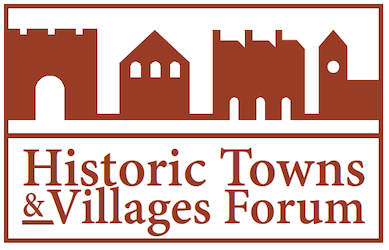Stoke Ferry, Norfolk visit

On Saturday 3 August, the first of our 2024 regional visits took place. The initial walking tour through Stoke Ferry put into context the history, setting and development of the village over time. Signs above doorways and house names give a clear indication of past use, yet walking through the village with knowledgeable local guides who are involved in an active Local History society provided a level of insight and connection to place that we would not otherwise have experienced.
This living history of the high street included stories of families who had lived in the village over the years; buildings that had been lost and rebuilt, such as the Toll House; the shops and pubs that had been at the centre of life in Stoke Ferry, and the changing fortunes of the church and chapels. Whilst the chapels have been converted into homes, it is hoped that funds will be forthcoming to enable the church to be reopened after necessary repairs, perhaps as an arts venue as it has been in the recent past.
As with so many other places, the river and the railway were both integral to the development of Stoke Ferry, but these two previously important transport routes have faded away over time, and the last regular passenger trains were in the 1930s. The main road is still fairly busy, as deliveries to the mill make their way along certain routes, but the bypass manages other traffic away from the centre.



There are plans for new housing, some of which are contingent on other developments that have not yet been finalised. However, in one location near the village hall, initial work and site investigations are to start the Monday after this visit and it is hoped that, over time, the village hall facilities might benefit from this activity.


Stoke Ferry still has some smaller businesses, including a hardware store that was highly praised as could provide all manner of practical household items. Yet when the remaining pub changed hands, the new owners applied for change of use planning permission on the grounds that they could not make it into a viable business. Locals decided that this community space was needed far more than one extra home, and an open meeting in January 2020 demonstrated village-wide support for the concept of a community pub.
This was the start of a sustained effort to take the pub into community ownership, with funds raised from a variety of sources, most notably the Plunkett Foundation. Once the keys were in finally in the hands of the community, the next stages of hard work started on a building that had suffered from significant water damage. Hearing directly from those involved about the hard work and dedication that had gone into this restoration was inspirational. The sustained numbers of volunteers who had come forward to, quite literally, lend a hand has resulted in a thriving space for the whole community.



These initial reflections on the visit will be written up into a short case study as part of HTVF’s ‘Reaching Rural communities: the value of heritage assets for social, environmental and economic wellbeing’.
Many thanks to the Stoke Ferry residents who led the visit on 3 August and helped with preparation in advance, including: Helaine Wyett, Lyn Juniper-Solley, Sue Lintern, Anne Ellis, Jim McNeill and Alexis Brand.
Back to News

